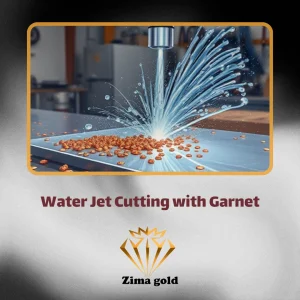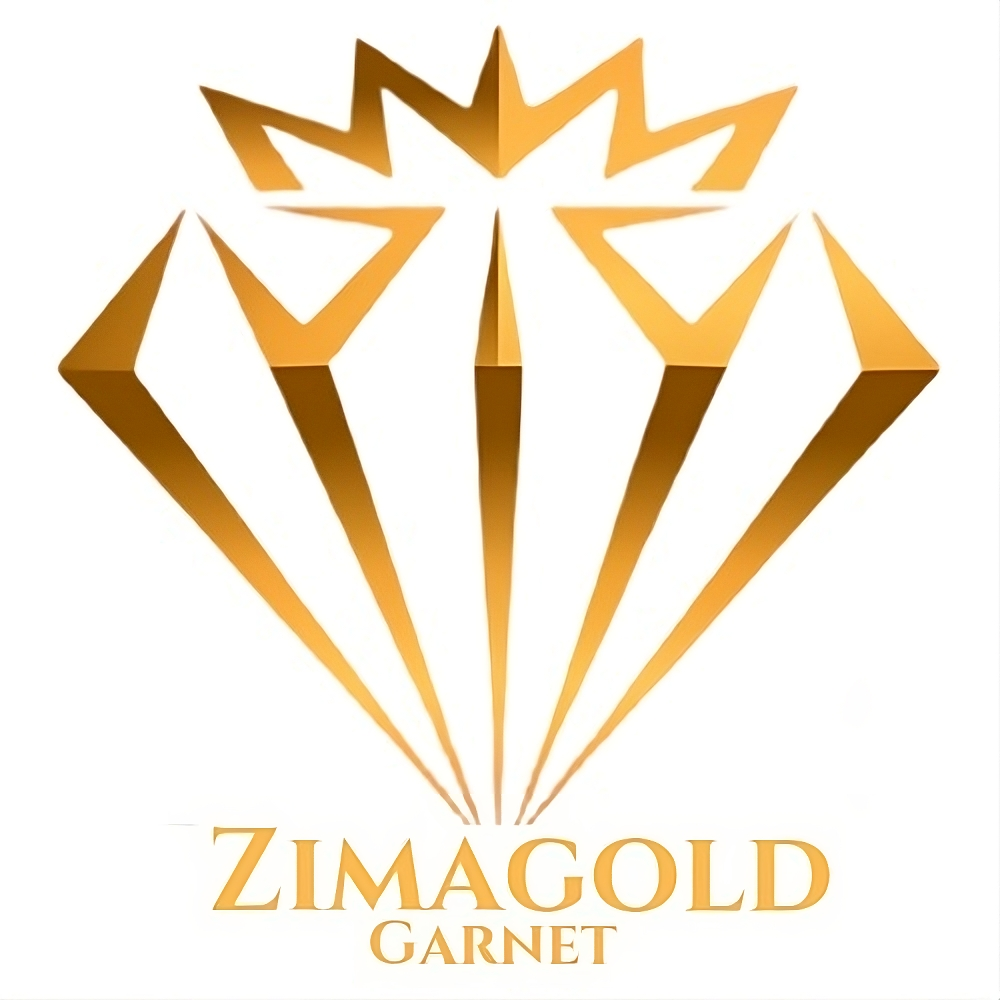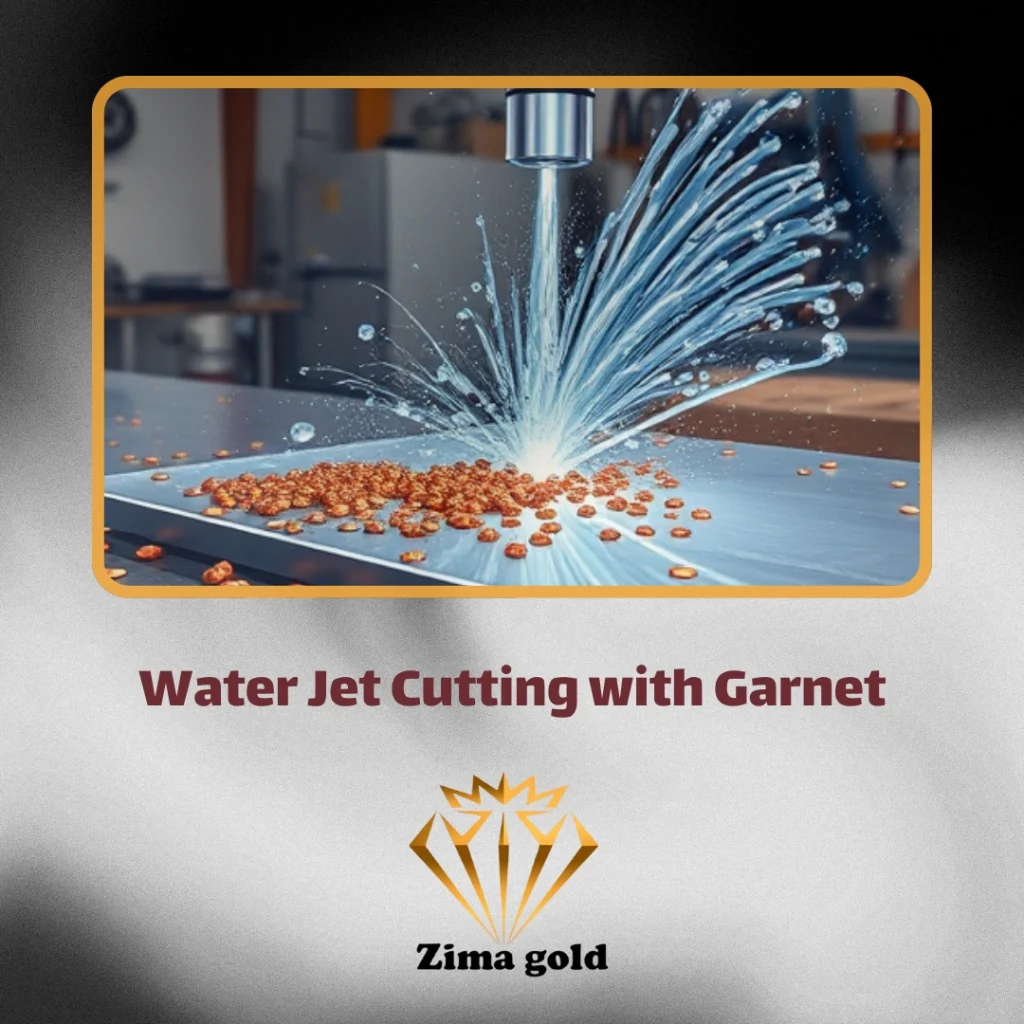Water Jet Cutting with Garnet: A Comprehensive Guide to Precise Cutting and Engraving
Water jet cutting with garnet is a highly advanced technology for precise cutting and engraving of a wide range of materials. This method combines high-pressure water with abrasive garnet particles to create high-quality cuts without thermal damage. In this article, we will provide an in-depth examination of this technique, from its mechanism of action to its advantages, disadvantages, and diverse applications.

Water Jet Cutting with Garnet
Mechanism of Action:
In this process, water is pressurized to an extremely high pressure (up to 6,000 bar) and expelled through a small nozzle. Simultaneously, fine and hard garnet particles are injected into the water stream, which then collide with the material surface at high speed. The kinetic energy of these particles causes abrasion and separation of the material, resulting in precise cutting.
Garnet: The Ideal Abrasive
Garnet is a hard silicate mineral (Mohs hardness of 7-7.5) with high abrasion resistance and an irregular shape, making it an ideal abrasive for water jet cutting. There are two main types of garnet used:
- Almandine garnet: Due to its higher resistance, it is more suitable for cutting harder materials.
- Pyrope garnet: Has its unique characteristics.
Advantages of Water Jet Cutting with Garnet:
- High precision and smooth cutting surface: Very precise cuts with minimal tolerance reduce the need for finishing operations.
- No thermal damage: Unlike thermal cutting methods, water jet cutting does not generate heat, preventing material deformation or damage.
- Material flexibility: Ability to cut a wide range of materials, including metals, stones, ceramics, glass, composites, and plastics.
- Complex cutting: Ability to cut complex shapes and precise geometries.
- High safety: With proper safety precautions, the risk to the operator is very low.
- Environmental friendliness: Compared to traditional cutting methods, it produces less environmental pollution.
Disadvantages of Water Jet Cutting :
- Relatively low cutting speed: Compared to some thermal cutting methods, the cutting speed is lower.
- High cost of garnet: Garnet is a relatively expensive material, increasing operating costs.
- Need for advanced equipment: Water jet cutting machines have a high initial cost.
- Garnet wear: Garnet is subject to abrasion and may need to be replaced.
Applications of Water Jet Cutting with Garnet:
- Automotive industry: Cutting and engraving of automotive parts, mold making.
- Aerospace: Cutting and engraving of aircraft and satellite components.
- Stone industry: Cutting and engraving of decorative and construction stones.
- Glass industry: Cutting and engraving of special glasses.
- Mold production: Creating precise molds for casting.
- Artistic and design applications: Creating complex artworks.
Conclusion:
garnet is a precise, efficient, and versatile cutting and engraving method with applications in various industries. Despite its high initial and operating costs, its high precision, lack of thermal damage, and environmental friendliness are significant advantages. Selecting the right garnet and determining cutting parameters play a crucial role in the quality and efficiency of this method.
best price for water jet garnet
If you’re looking to purchase garnet for water jet cutting, Zemagold is the best choice for quality. Their garnet products are sourced and processed to meet the highest industry standards, ensuring exceptional performance and durability for your cutting applications. With a reputation for excellence, Zemagold is committed to providing customers with the finest materials to enhance the efficiency and effectiveness of their water jet cutting projects.

